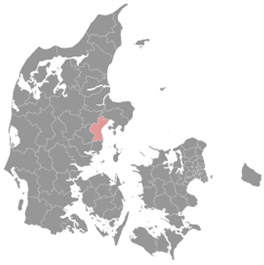All official European Union website addresses are in the europa.eu domain.
See all EU institutions and bodiesAarhus is strengthening climate resilience in the Risvangen neighbourhood by separating rainwater from wastewater and managing runoff directly on site.
Key Learnings
About the Region
Climate Threats
Aarhus is facing growing climate challenges, particularly more frequent and intense stormwater events. These cloudbursts and heavy rains often overwhelm the city’s water infrastructure, causing untreated wastewater and rainwater to overflow into lakes, streams, and the Bay of Aarhus. The result is widespread flooding of streets, cellars, and green spaces, posing risks to public health, property, and the urban environment. As rain- and wastewater usually flow into the same sewage system, separating the water reduces pollution due to overflows and reduces the flood risk.
Strategic Decisions are Key to Climate-Resilient Urban Areas
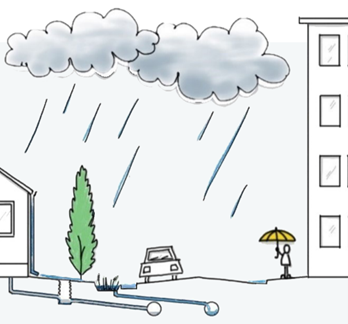
Separating Rain from Wastewater in Risvangen
The project in Risvangen is the first example of separating rain- from wastewater and handling stormwater with Nature-based solutions in a large Danish residential area. Developing and planning the project took three years (203-2026), and its implementation an additional three years (2016-2019).
The project follows five principles:
- Work with landscape-based stormwater management, using Nature-based Solutions
- Consider water management interests in planning the treatment system
- Create time and space for water
- Improve the quality and quantity of green urban spaces
- Implement cost-effective climate adaptation solutions, actively seeking synergies with other infrastructural projects, e.g. road infrastructure, renewal of district heating etc.
The measures in the Risvangen catchment store, delay, transport, and discharge stormwater, following the “Sponge City” concept used in Copenhagen. The project incorporates the new green urban drainage system into the existing urban structure, resulting in a patchwork of Nature-based Solutions. Green spaces and ponds catch excess water, allowing it to slowly flow into a small forest creek in the nearby neighbourhood of Risskov.
The project team, involving project designers and technicians from the City of Aarhus and the utility company chose Nature-based Solutions that met technical requirements and added recreational value to the area, corresponding with the five project principles and the citizens’ wishes. The close cooperation between the city and the utility company proved successful in choosing and implementing the most efficient solutions, reducing misunderstandings and failures during the process. A mix of city and water utility funds financed the project, enabling flood prevention, reducing pollutants in the bay, and adding recreational value to the neighbourhood.
During light rainfall, the system transports water along the surface to roadside infiltration beds and ponds and seeps into the ground. During heavy rains, the catchments slowly fill up, leading the water into a small stream that discharges it into the Bay of Aarhus.
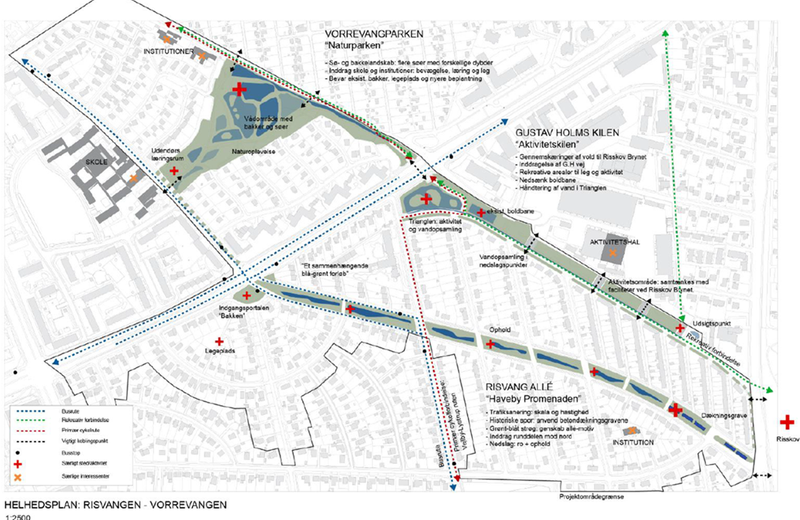
Instead of installing new pipes, the project took advantage of opportunities to manage rainwater through recreational and visually appealing solutions, while also using the natural terrain to direct stormwater flow. The Nature-based Solutions included terrain modifications, small roadside infiltration beds, traditional wet ponds and large green infiltration basins, along with multifunctional areas, serving as sports grounds during dry periods and retention basins during stormwater events.
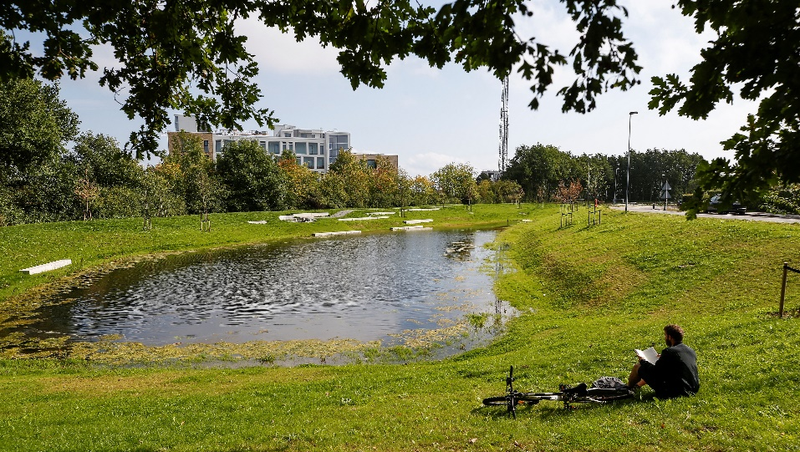
The design utilises the natural terrain to manage stormwater, directing it towards Nature-based Solutions specifically adapted to address flooding. The project is not about either/or solutions, but rather about solutions that combine different ways of handling stormwater, while positively contributing to the cityscape.
In addition to retaining water, the Nature-based Solutions act as natural filters, reducing nutrient runoff into the stream and the Bay of Aarhus. Separating rainwater from wastewater reduces nitrogen by 85% and phosphorus by 70%, helping to maintain safe bathing water in the bay.
Tested in Practice: Nature-based Solutions prove scalable and resilient
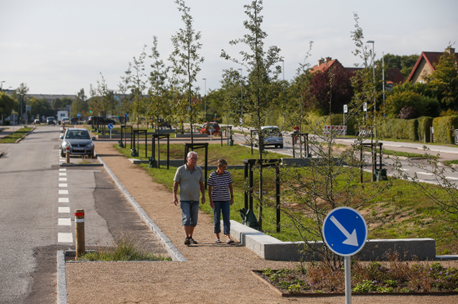
In 2023, the catchment passed its first test with a storm hitting the catchment of Risvangen with a forty-year rain event. The catchment design, using natural depressions and terrain, proved successful in managing stormwater, as the measures prevented overflows into the Bay of Aarhus and flooding in the neighbourhoods. The Nature-based Solutions effectively contained excess water.
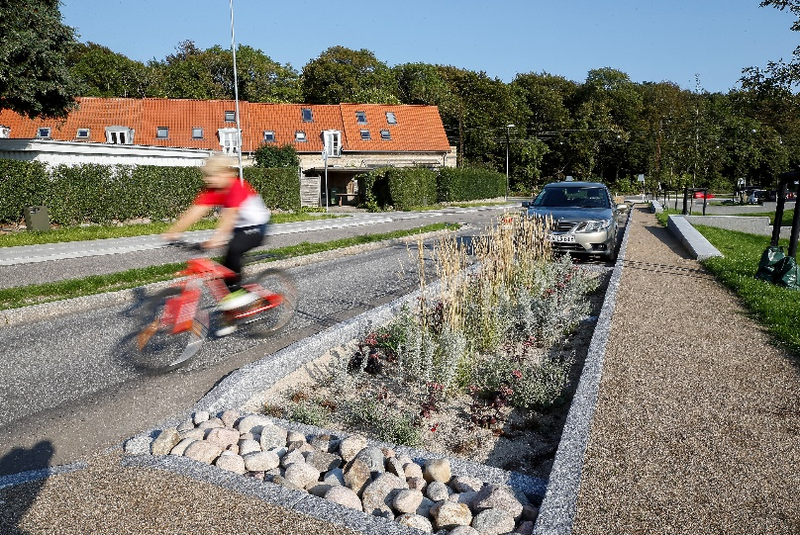
Furthermore, follow-up modelling of the entire catchment showed it can handle a stormwater event with an 80-year return period projected for 2070 – demonstrating the strength of the design and implementation process.
Nature-based Solutions and using the existing terrain is paramount in adapting a city to climate hazards such as flooding, where climate adaptation measures also create a more liveable and recreative city.
Mathias Joachim Skov Pristed, Project Manager
To ensure that the design and solutions deliver satisfactory results regarding the reduction of nutrient loads, the project team compared the combined Nature-based Solution system to conventional rainwater retention basins, which lead stormwater into pipes, delaying flooding. The conventional basin collects washed-out sediments and removes pollutants. The results show that the combined system has better purification capacities than traditional retention basins and sufficiently secures water quality in the retention areas. Soil infiltration enables natural purification and retention of nutrients, pollutants and sediments. The purification effects of the combined system have been monitored and documented, revealing very satisfactory purification results.
Citizen Involvement
During the planning phase, the project team established a wastewater management plan and technical design principles.
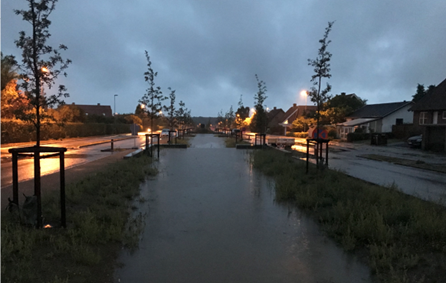
The city and the utility company of Aarhus required the solutions and design principles to align with citizen expectations, which is why they involved citizens in the entire project process and held several citizen events:
- An open introductory meeting to inform citizens about the project.
- Visits to private and demo gardens in the area, accompanied by technical consultants, inspired citizens to take responsibility for implementing rainwater management solutions on their own properties.
- Events where the municipality invited entrepreneurs to inspire, support and guide the citizens in choosing their solutions.
- Meetings with the project team during the entire implementation process.
- Several meetings with the local housing associations.
At the beginning of the project, the citizens mainly focused on handling stormwater on their property. During the planning phase, their focus shifted towards the recreational value of the new retention area and green solutions along the main road. Because the Risvangen project was the first of its kind, the project team thoroughly evaluated key learnings from the financial and technical cooperation between the city and the water utility company, and the citizen engagement process, for which the team conducted 35 interviews. Some key learnings:
- Communicate clearly the scope of citizen involvement to align the citizens’ expectations with the possibilities of involvement.
- Align citizen involvement within their focus areas. It is not possible to involve citizens in workshops to debate the overall master plan when the aim is to elaborate on how to handle stormwater on private properties.
- Smaller group meetings in gardens or the project area offer room for better dialogue than large indoor plenary meetings.
- The citizens found it difficult to distinguish between the two project partners (city and utility company). Therefore, clear communication with the responsible party is a key factor.
- The framework should clearly define the scope of citizen involvement without “over-involving” them to avoid confusion.
The evaluation revealed many different perceptions of the project. While some citizens found it exciting to be part of a new green stormwater management approach, others felt confused. Some were surprised by the many possibilities and elements involved. Feedback from meetings with the local citizen council, after implementing the Nature-based Solutions, indicates that residents welcomed the changes and are benefiting from the new green spaces. Citizen involvement to the right extent is key to the best solutions for the specific area.
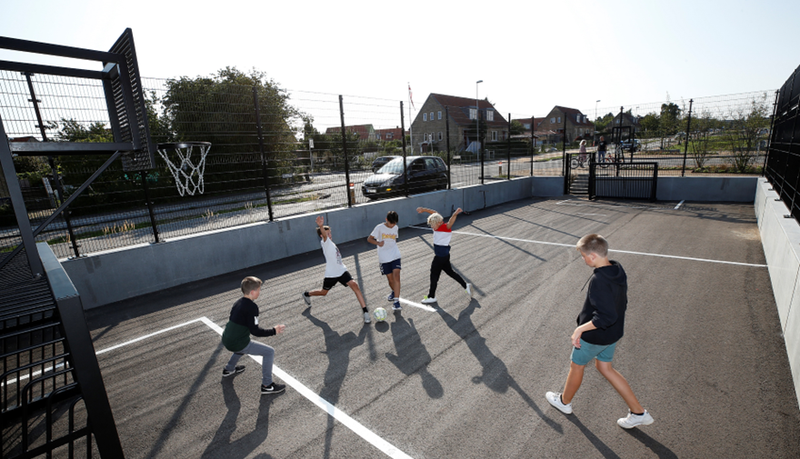
Summary
Further Information
Contact
Keywords
Climate Impacts
Adaptation Sectors
Key Community Systems
Countries
Funding Programme
Disclaimer
The contents and links to third-party items on this Mission webpage are developed by the MIP4Adapt team led by Ricardo, under contract CINEA/2022/OP/0013/SI2.884597 funded by the European Union and do not necessarily reflect those of the European Union, CINEA, or those of the European Environment Agency (EEA) as host of the Climate-ADAPT Platform. Neither the European Union nor CINEA nor the EEA accepts responsibility or liability arising out of or in connection with the information on these pages.
Language preference detected
Do you want to see the page translated into ?



